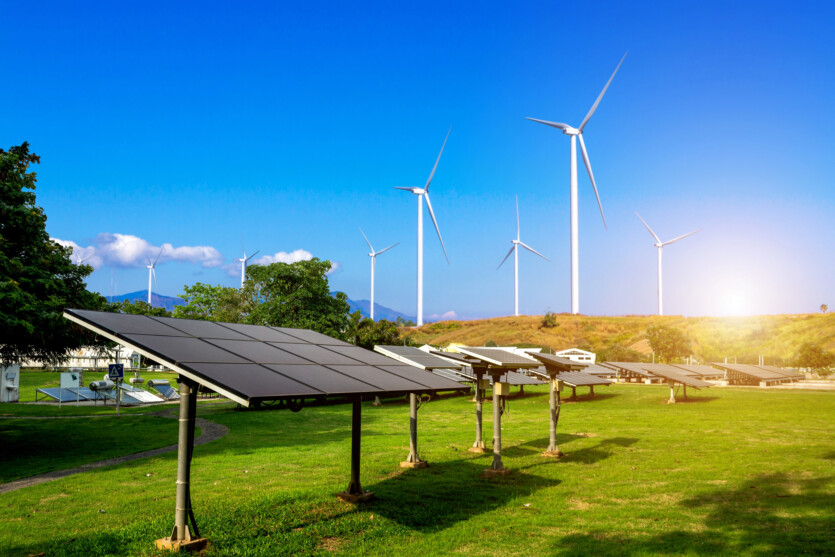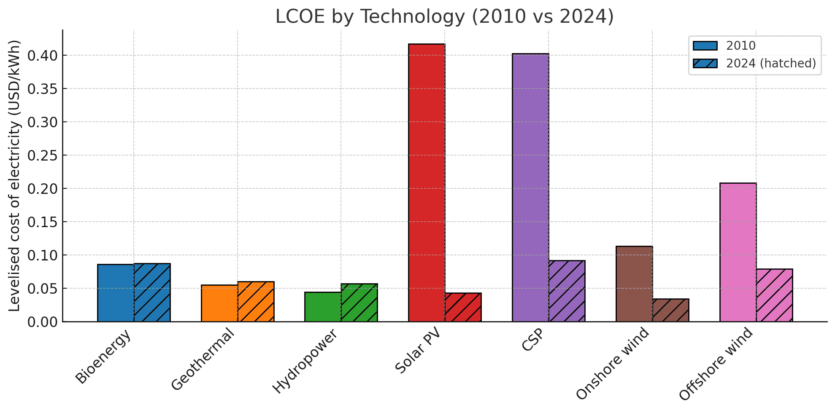
It is still widely believed that renewable energy projects are promising, attractive, but expensive and impractical. However, recent studies show that most renewable energy projects are already cheaper than fossil fuels.
According to report, published by International Renewable Energy Agency (IRENA), 91% of the commissioned renewable energy production capacities on an industrial scale provide cheaper electricity, than the cheapest sources of fossil fuels. This progress has been driven by a favorable cycle of continuous technological innovation, significant economies of scale in production, and an increasingly favorable policy framework.
«We are on the threshold of a new era. Fossil fuels are coming to an end. The sun is rising on an age of clean energy. We have passed the point of no return, — the UN Secretary-General emphasized in this regard Antonio Guterres.
According to him, it is no longer about clean energy, but about economic feasibility and national security. Fossil fuel prices and demand are becoming increasingly unstable and unpredictable.
«Today, fossil fuels pose the greatest threat to energy security. They leave economies and people at the mercy of price shocks, supply disruptions and geopolitical instability. Prices for solar energy are not jumping. There is no embargo on wind energy. This transformation is primarily about energy security and human security», — the UN Secretary-General emphasizes.
Organizations such as IRENA and the International Energy Agency (IEA) use the levelized cost of energy (LCOE). It represents the average net current cost of electricity generation by a power plant over its entire lifetime. This is a total indicator calculated by dividing the total life cycle cost of a project by its expected total energy production. In other words, is the minimum price at which electricity should be sold to achieve break-even for the project over its entire lifetime.
Analysis results IRENA has demonstrated, that for onshore wind farms, the LCOE is $0.034/kWh. This makes wind farms the most affordable source of electricity on Earth. Solar photovoltaic installations demonstrated an LCOE of $0.043/kWh or $43/MWh. Hydropower plants — $0.057/kWh. For comparison, the unsubsidized electricity consumption rate for a new gas-fired combined cycle power plant, often considered the cheapest fossil fuel option, is between $0.045 and $0.115/kWh.

In 2024, a record 582 GW of new capacity was commissioned worldwide with renewable energy sources, which is almost 20% higher than the previous year. This growth has been driven by increased production efficiency, the most competitive supply chains, and accumulated project development experience.
However, the indicator LCOE does not reflect the whole picture. For example, it does not take into account costs of managing the variability of intermittent energy sources such as solar and wind. The IRENA report shows, that the cost of battery energy storage systems for utilities has also fallen sharply by 93% since 2010. However, industrial renewable energy producers are now in need of larger volumes for energy storage.
The location of alternative energy sources should also be taken into account. Most resource-rich locations for solar power (deserts) and wind power (plains and coasts) are often far from cities and industrial centers.
In addition, the indicator The LCOE does not take into account such consequences of economic activity as negative externalities, in particular, environmental pollution caused by the combustion of fossil fuels, while renewable energy sources do not. The fastest growth and highest returns in the coming decade are likely to come from technologies that enable the transition to renewable energy sources.
Source: ZME Science

Spelling error report
The following text will be sent to our editors: